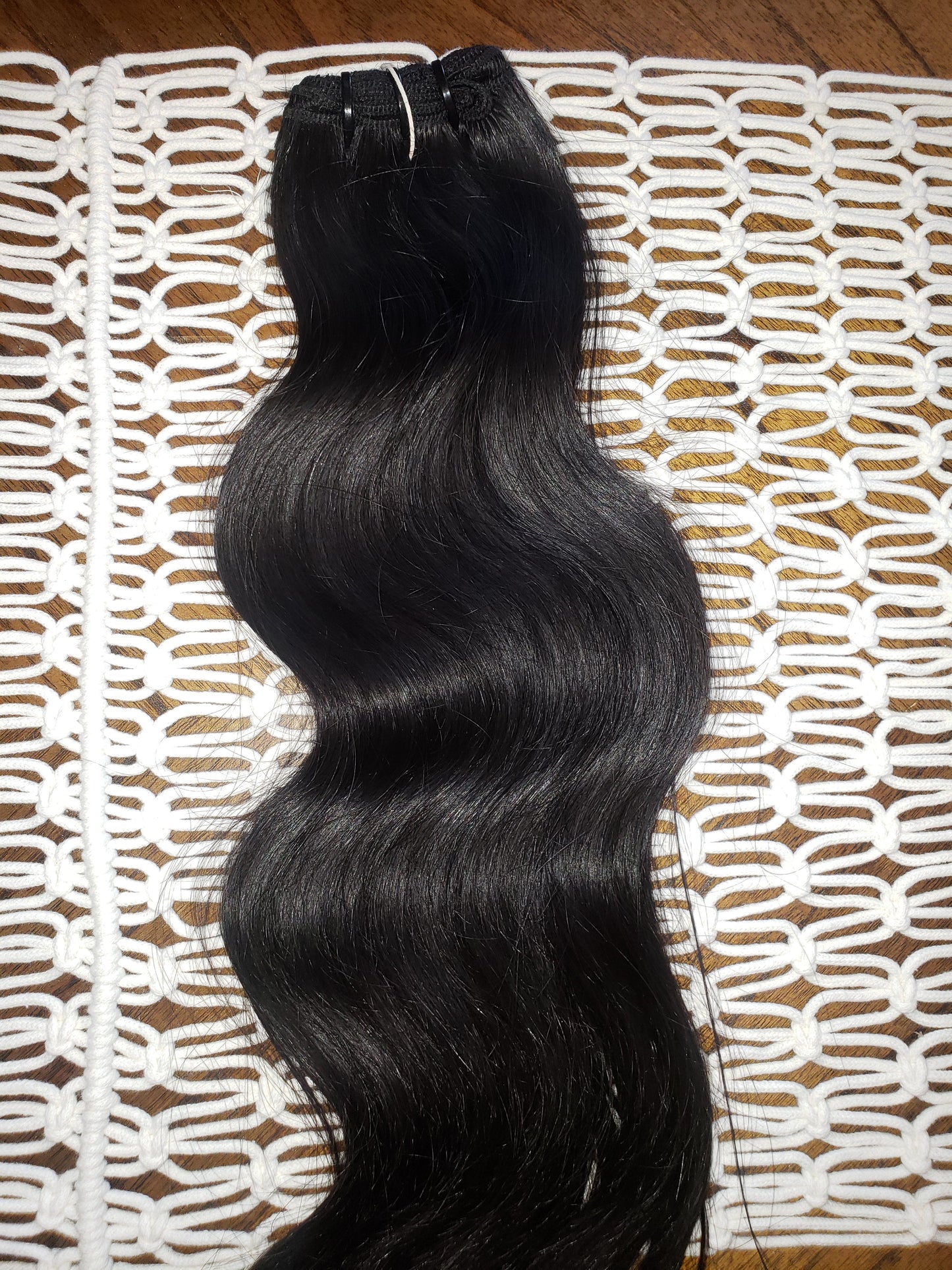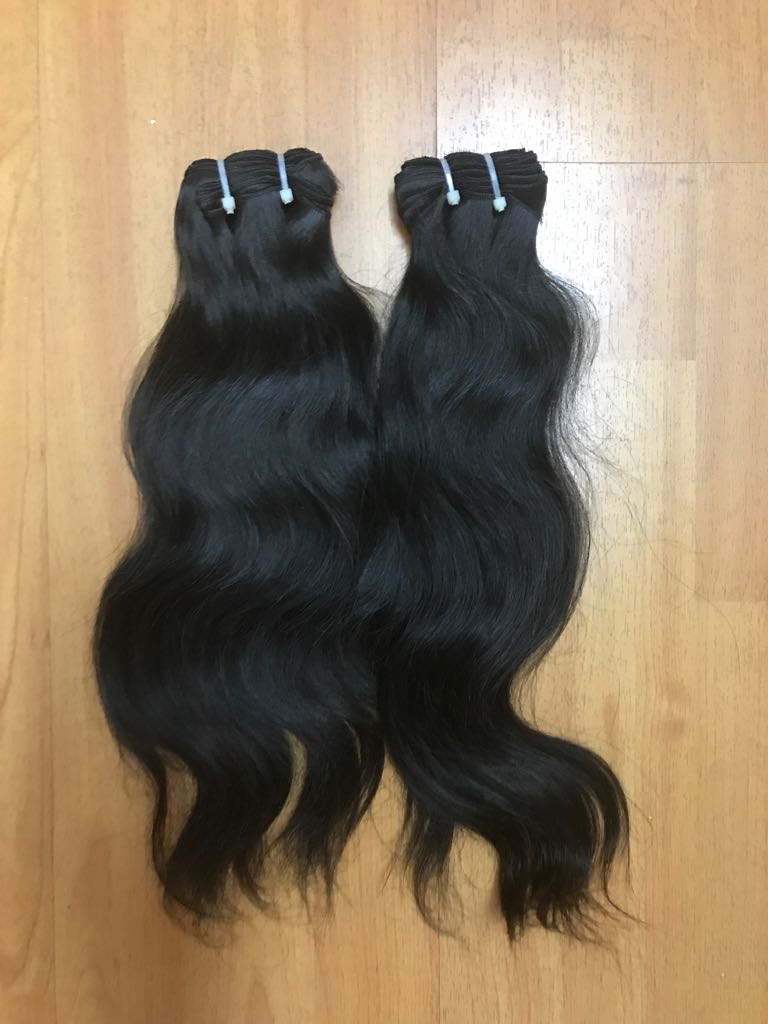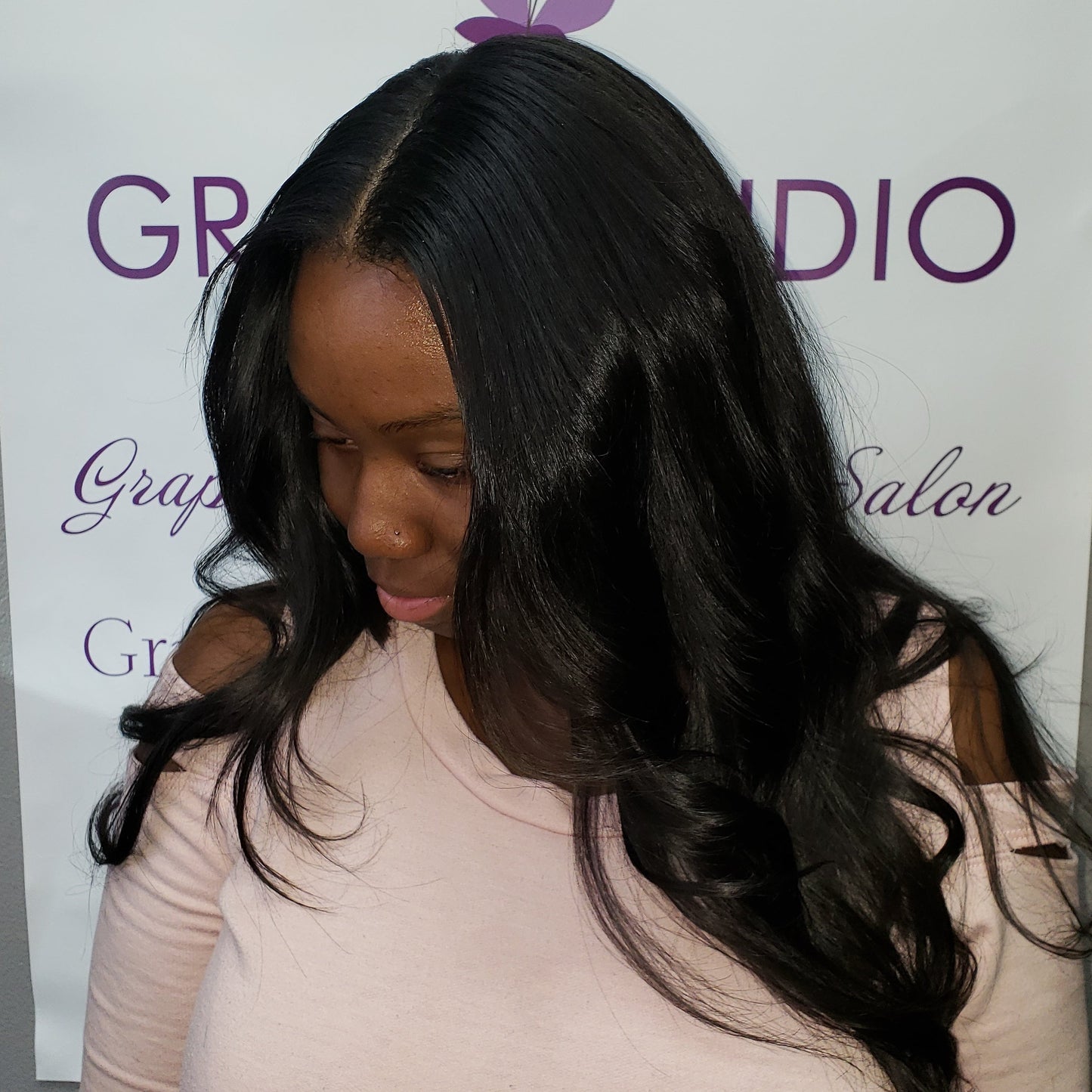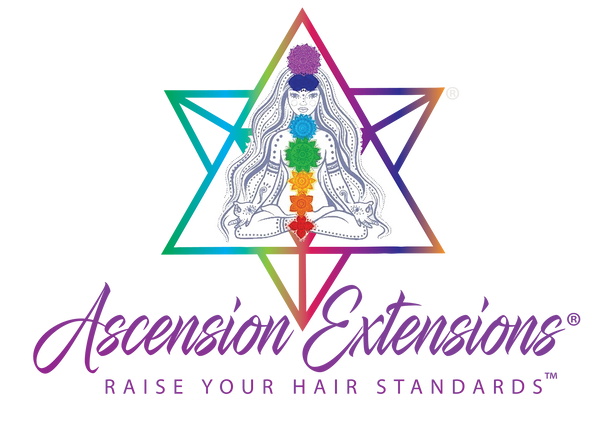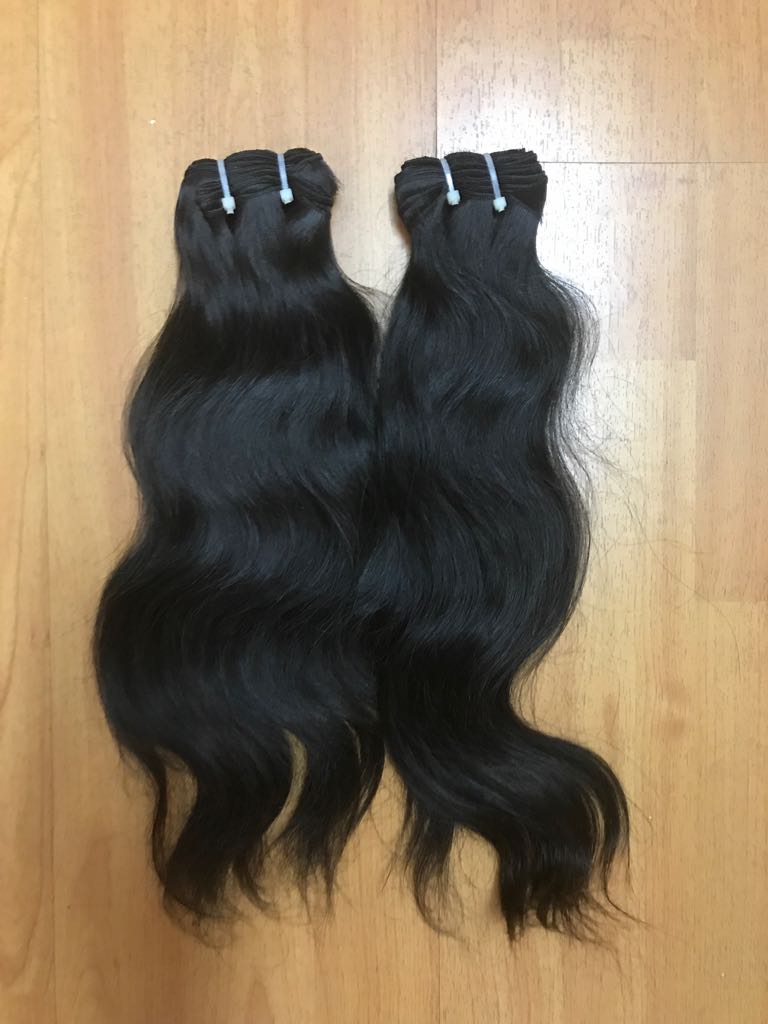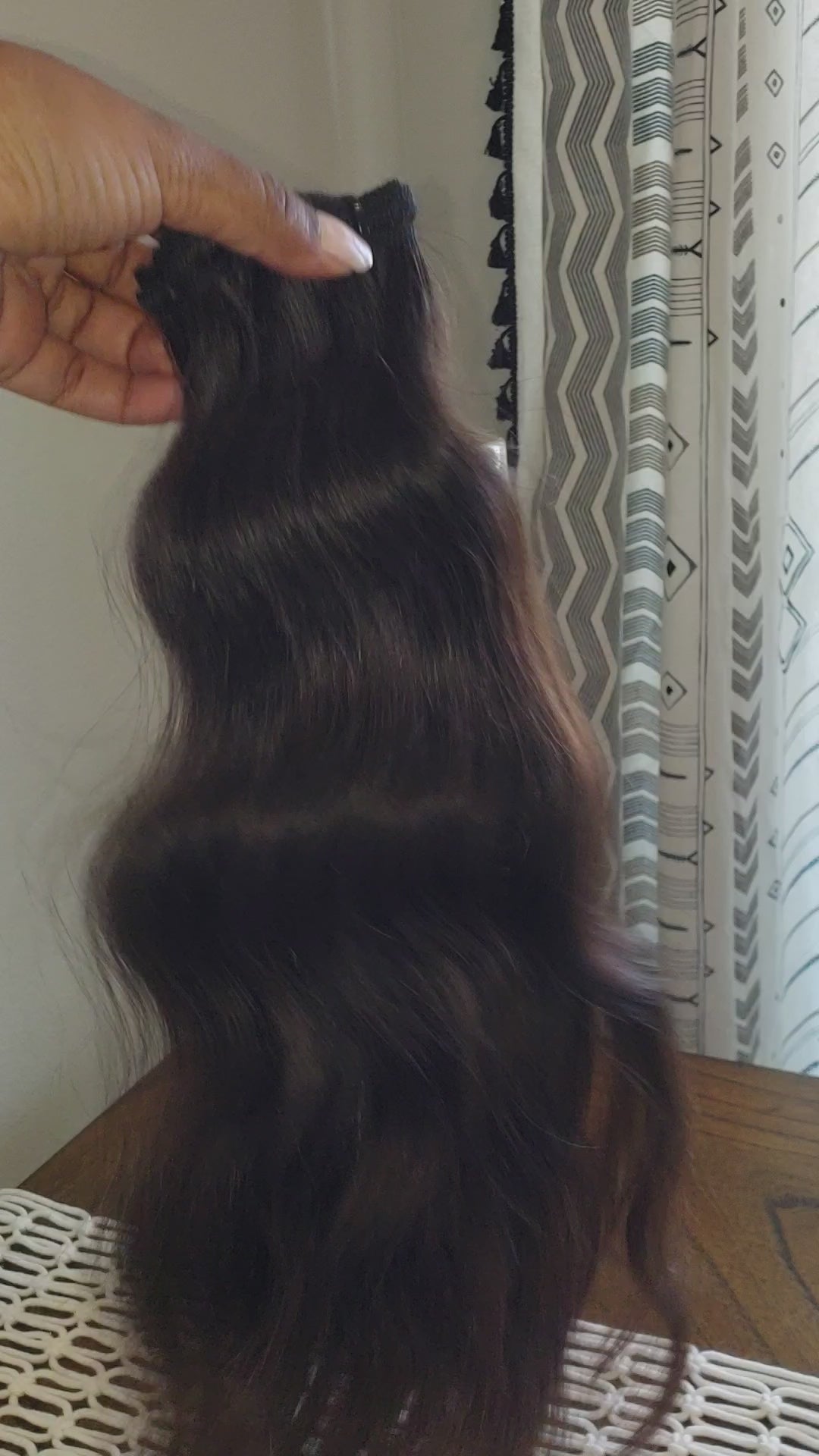Ascension Extensions
Indian Collection Loose Wave
Indian Collection Loose Wave
Couldn't load pickup availability
Hair texture, especially when discussing Indian hair, can be classified based on the shape and feel of the hair strands. Indian hair is renowned for its versatility, thickness, and high quality, making it popular in the hair extension and wig market. Let's break down the differences between straight, wavy, and coarse wavy textures:
-
Straight: Indian hair with a straight texture has no natural curl or wave pattern. It lies flat from the root to the tip and is characterized by its sleekness and silkiness. Straight Indian hair can range from fine to thick, but it typically has a smooth texture that reflects light well, giving it a glossy appearance. This type of hair is generally easy to manage and can be styled in a variety of ways, though it might not hold curls as well without the help of styling products.
-
Wavy: Wavy Indian hair has a natural slight curl pattern that gives it body and volume. The waves can range from loose to more defined, but they're typically soft and not too tight. Wavy hair strikes a balance between straight and curly, offering a versatile look that can be styled to appear either more straight or curly depending on the desired outcome. It tends to have a bit more texture than straight hair, which allows it to hold styles well. Wavy Indian hair is often considered highly desirable for its balance of manageability and volume.
-
Coarse Wavy: Coarse wavy Indian hair combines the characteristics of wavy hair with a thicker strand diameter, making the hair feel fuller and denser. The term "coarse" refers to the texture of the hair strand itself, which is wider or thicker compared to fine or medium textures. Coarse wavy hair has a more pronounced wave pattern and offers significant volume and body. Despite its thickness, it can be quite manageable and versatile, capable of holding styles well. However, it may require more moisture to maintain its health and sheen compared to finer hair textures.
Each hair texture has its unique qualities and requires different care routines to maintain its health and appearance. For instance, straight hair might need less frequent washing to prevent it from becoming too dry, while wavy and coarse wavy hair might benefit from regular hydration and conditioning treatments to keep the waves looking defined and vibrant.
In summary, the choice between straight, wavy, and coarse wavy Indian hair textures depends on personal styling preferences, the desired volume, and how much time one is willing to dedicate to hair maintenance. Straight hair is the easiest to manage but offers less volume, wavy hair strikes a balance between ease of styling and volume, and coarse wavy hair offers the most texture and volume but requires more maintenance to keep it looking its best.
Machine weft" hair extensions refer to hair strands that have been sewn together using a sewing machine to create a continuous hair strip or "weft." This method is one of the most common techniques used in the production of hair extensions. The process involves collecting individual hair strands and using a sewing machine to add a reinforced stitch near the top (root end) of the strands, binding them together. This stitch creates a weft that is easy to handle, install, and blend with the wearer's natural hair.
Here are some key points about machine weft hair extensions:
- Durability: Machine weft extensions are known for their durability and strength. The machine stitching ensures that the hair is securely attached, reducing shedding compared to other types of wefts, like hand-tied wefts, which might be more delicate.
- Versatility: These extensions can be cut to size, making them adaptable for various installation methods, including sew-in techniques, where the wefts are sewn into braided hair, or clip-ins, where clips are attached to the wefts for temporary use.
- Volume and Length: Machine weft hair extensions are an effective way to add volume and length to one's natural hair. They come in various lengths, textures, and colors to match or enhance the wearer's hair.
- Ease of Installation: While professional installation is recommended for the most natural-looking result, the structure of machine wefts makes them relatively easier to work with, whether for a full sew-in weave, partial weave, or clip-in extensions.
However, it's worth noting that because machine wefts are thicker at the seam where the hair is sewn together, they might not lay as flat against the head as hand-tied wefts, potentially making them slightly more noticeable. Proper installation and styling can minimize this issue, ensuring a seamless blend with the natural hair.
Nightly Tips
-
Brush Before Bed: Gently brush your hair extensions with a paddle brush or a wide-tooth comb before going to bed to remove any tangles and prevent matting. Brush or comb starting at the very ends of the hair up to the weft. (Curly hair extensions this is only necessary on wash day.)
-
Braid Your Hair: Loosely braid your hair or twist for waves, kinky curls put it in a loose ponytail to prevent tangling and matting while you sleep. This is particularly important for longer extensions.
-
Use a Silk or Satin Pillowcase: Silk or satin pillowcases are smoother for the hair cuticles than cotton and can help reduce friction, which causes less tangling and matting of your hair extensions.
-
Avoid Sleeping with Wet Hair Extensions: Going to bed with wet hair extensions can lead to tangles and matting. Ensure your hair is completely dry before you go to bed.
-
Consider a Nightcap or Hair Wrap: Wearing a silk or satin nightcap or wrapping your hair can also protect your extensions from tangling and friction damage.
Share
